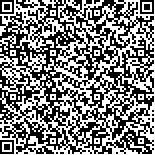下载中心
优秀审稿专家
优秀论文
相关链接
摘要

气溶胶与全球热辐射平衡、水循环、人类健康密不可分,其观测精度直接影响天气预测、气候建模以及对人类健康影响评估的精度,激光雷达能监测气溶胶的垂直分布,对污染气溶胶的扩散趋势、污染源反演、气候预测等均有重要意义。本文基于激光在大气中的辐射传输过程,根据米散射激光雷达的工作原理,使用雷达的多个系统参数计算雷达常数,建立激光雷达气溶胶质量浓度反演模型,从地面向上在晴空条件下进行了珠三角地区典型区域的秋冬季节气溶胶垂直观测的实验,计算气溶胶质量浓度的垂直廓线,反演气溶胶的垂直分布情况。验证与分析结果表明:(1)激光雷达反演结果显示,白天的反演结果中噪声大大减少,表明反演算法能够有效减弱太阳光的影响。(2)相比于传统方法,使用雷达常数而非边界值的反演结果波动较小,更符合实际,能够有效避免高空噪声的影响。(3)高层大气在晴朗静稳天气状况下较为干净,气溶胶基本分布在低空区域,质量浓度随高度基本呈负指数分布。
This study aims to analyze the vertical distribution of aerosol particles during autumn and winter by deriving the number density of aerosol particles from Mie Lidar return signals. Haze has always existed in regions with low humidity and stable weather. In such regions, particle vertical distribution characters are needed for transport mechanisms. As a widely used instrument, Mie Lidar surfer from the uncertainties caused by the Lidar ratio and boundary value assumption. However, Mie Lidar is the most powerful tool to observe the atmospheric vertical distribution because it performs well in day and night under all weather conditions in comparison with passive sensors. Moreover, Mie Lidar is easier to carry compared with Raman Lidar.Lidar radiation principles were studied to understand the Lidar equation and its solution. Several parameters were carefully chosen for the numerical solutions. Instead of using boundary value for approximation, the Lidar parameter k was directly calculated on the basis of Lidar-validated parameters to avoid uncertainties. Thus, aerosol particles backscatter and extinction coefficient were retrieved by solving the Lidar equation and integrated for Aerosol Optical Depth (AOD) results. A Cimel CE318 sun photometer and an ASD FieldSpec3 were used to measure AOD as validation data. Lastly, the number density of aerosol particles was derived on the basis of Mie theory with the estimation of aerosol particle distribution, size, and refractive index of particles.According to the number density vertical profile, nearly no difference was observed between the number density vertical profile of aerosol particles during daytime and nighttime in one day at a low altitude. This result indicated that the sunlight effect is ignorable for aerosol particle distribution near ground. The retrieved AODs with the CE318 and ASD observations showed a root mean square error of approximately 0.0541 and 0.0100, demonstrating that the retrieved result is reliable. The comparison with traditional method showed that the proposed algorithm in this study improved the accuracy of the traditional Lidar equation solution. The near-real distribution results showed aerosol particle distribution characteristics near the ground. The number density of aerosol particles in Guangzhou was mainly distributed in low-altitude regions, and its relationship with height was approximately a negative exponential distribution. The retrieved results of the aerosol particle number density were similar to those from the previous years, indicating that the air pollution in Guangzhou has not worsened. However, potential environmental threats and air pollution problems still need to be governed.Several uncertainties, such as changes in air temperature and pressure, validation of Lidar instrument k, and overlap factor, that could cause deviation were identified. The overlap factor and molecular backscatter coefficient were carefully calculated using the theoretical method. Frequent updates on Lidar parameters will be requested from the Lidar company in the future. The theoretical and experimental methods were combined for the calculation of the overlap factor and molecular backscatter coefficient. Raman Lidar was used to measure the actual Lidar ratios and characteristics of molecular scatter.The aerosol particle number density-retrieved algorithm was based on Lidar radiation principles and revealed the particles’ spatial distribution characters. The vertical distribution characters remained unchanged for several days under stable weather in the autumn and winter seasons, and its relationship with height was approximately a negative exponential distribution; hence, air conditions can have huge effect on human health. Air pollution problem still needs to be governed.

